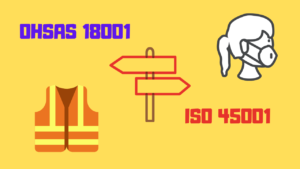When it comes to 8D Report preparation, teamwork is essential. However, putting together a team that can work together effectively can be a challenge.
In this article, we will discuss in depth the concept of team formation for 8D problem-solving.
Table of Contents
What is 8D Problem solving approach?
The 8D is an eight-step Problem-solving technique used to investigate, identify, and correct problems in the production process. The 8 steps outlined in the 8D report can be used to develop a plan to address the problem and take preventative action to avoid similar problems in the future.
The 8 steps are:
D1:Define the problem
D2: Describe the problem
D3: Investigate the problem
D4: Identify the root cause of the problem
D5: Develop a plan to correct the problem
D6: Implement the corrective action plan
D7: Verify the effectiveness of the corrective action plan
D8: Take preventative action to avoid similar problems in the future
To read in detail about 8D Problem solving Process: Click Here
Prerequisite for 8D Team formation
8D reports are a powerful tool for problem-solving, but to be effective, they require a team of dedicated individuals.
8D reports can be complex and time-consuming to prepare. It’s not something that can be done by a single individual.
To form an effective 8D team, you will need individuals with the following skills and knowledge:
- 8D Problem-solving Process
- Project management
- Quality control
- Lean manufacturing
- Six Sigma
- Root cause analysis
- Data analysis
- Report writing
The 8D team should also be composed of individuals from different departments within the company, as 8D reports often require inter-departmental collaboration.
With the right team in place, 8D reports can be an invaluable tool for identifying and correcting problems in the production process.
Team Structure
The appropriate size of the 8D team is 4 to 8 people who are closely related to the problem. It usually involves people from different functions/departments in the organization coming together to solve a common problem.
- A champion is a sponsor, not an active working member. He is responsible for proving final approval for changes if he agrees with the findings.
- A team leader (i.e. Quality engineering or Product Manager) – The person who coordinates the entire 8D project throughout all of its 8 disciplines. Team leaders act as a binding force amongst all team members.
- An 8D expert (i.e. Quality Engineering) – A person who has the technical know-how of the 8 disciplines. He/she guides the team for appropriate implementation of the 8D methodology.
- A subject expert is one who has domain expertise.He/she is an expert in the domain to which the problem belongs. Example casting expert.
- Supporting Functions (i.e. Supplier Quality, Electrical Engineering, Mechanical Engineering, Manufacturing Engineering, Operations, Field Service, Technical Support, Marketing, Application Engineering, etc…) – people who have practically experienced the problem and understand the pain it causes.

Steps for Team Formation
When forming a team for 8D report preparation, it is important to ensure that all team members are capable of completing the assigned tasks. The team should be composed of individuals with the necessary skills and knowledge to investigate, identify, and correct problems in the production process.

The following steps can be used to form a team for 8D report preparation:
1. Define the problem that needs to be addressed by the 8D report.
A problem has been identified in the production process, but the team is not sure how to proceed.
The team is unsure of where to start or what steps to take next.
The 8D report can be used to help identify and correct problems in the production process. By following the 8 steps outlined in the 8D report, the team can develop a plan to address the problem and take preventative action to avoid similar problems in the future.
2. Identify the skills and knowledge necessary to complete the 8D report.
Team members will need to be familiar with the 8D report format and the steps involved in completing the report. In addition, team members should have the necessary skills and knowledge to investigate, identify, and correct problems in the production process.
3. Select team members who have the necessary skills and knowledge to complete the 8D report
It is important that all team members are capable of completing the assigned tasks. The team should be composed of individuals with the necessary skills and knowledge to investigate, identify, and correct problems in the production process.
4. Assign tasks to team members
Once the team has been formed, tasks can be assigned to team members. Each team member should be responsible for completing a specific task or set of tasks.
5. Ensure that all team members understand their roles and responsibilities.
It is important that all team members understand their roles and responsibilities. They should be familiar with the 8D report format and the steps involved in completing the report. Also, team members shall know their roles in each step of the 8D process.
6. Monitor the progress of the 8D report
As the 8D report is being prepared, it is important to monitor the progress of the team. The team should be held accountable for completing the 8D report in a timely and efficient manner.
7. Once the 8D report is completed, review it as a team and take action based on its findings
The 8D report should be reviewed as a team and the findings should be used to address the problem that was identified in the production process.
By taking action based on the findings of the 8D report, the team can prevent similar problems from occurring in the future.
8D reports can help your team avoid problems and improve quality in the future.8D reports should be reviewed on a regular basis to ensure that they are effective.
Why team building is important in problem-solving?
Team building is important in problem-solving because it helps to improve communication and cooperation among team members. By working together cooperatively, team members can better understand the problem and develop a plan to address it.
In addition, team building can help to improve team morale and encourage team members to work together more effectively. When team members are working together cooperatively, they are able to better understand the problem and develop a plan to address it. This can help to improve the overall productivity of the team.





